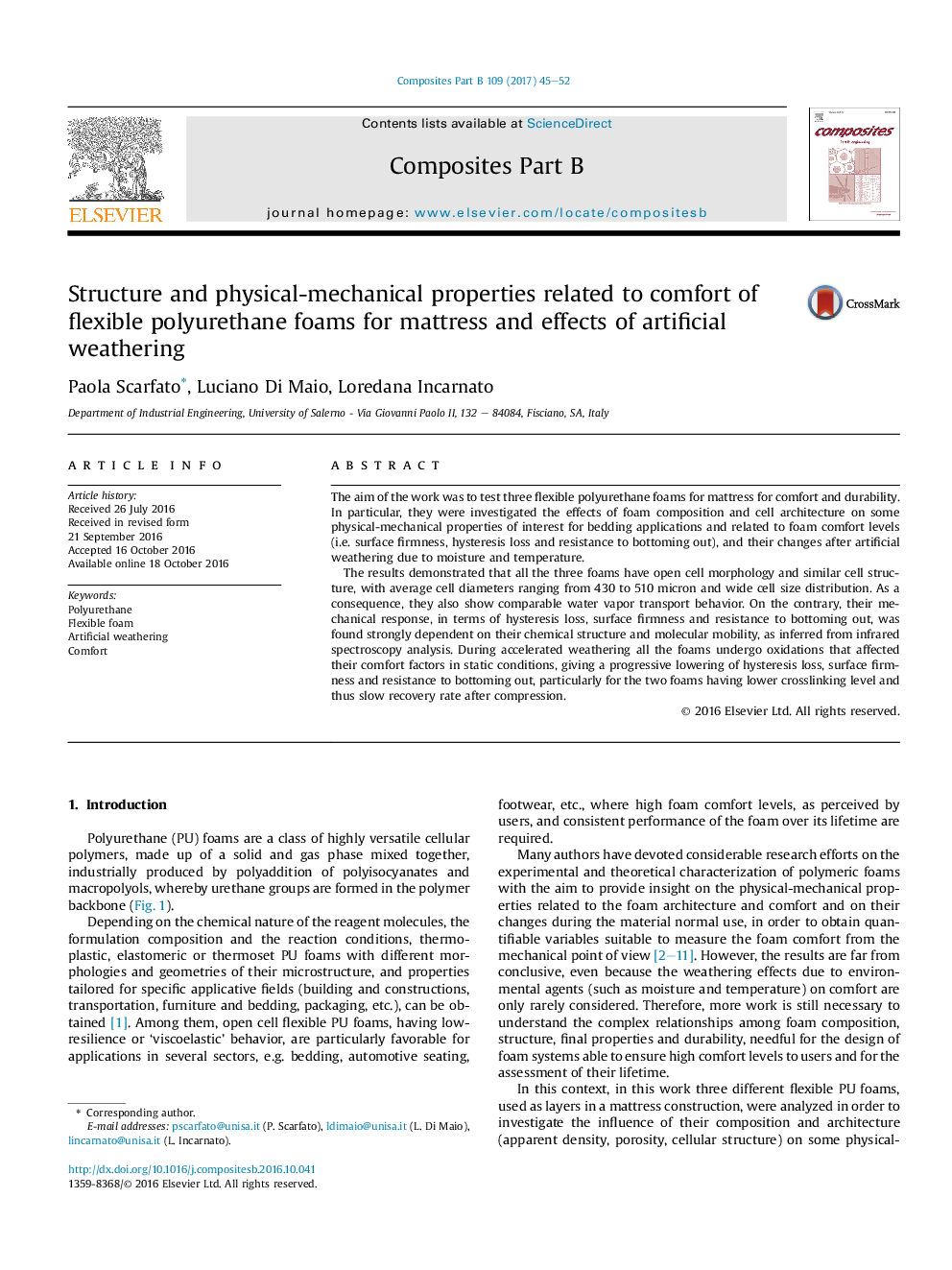| Article ID | Journal | Published Year | Pages | File Type |
|---|---|---|---|---|
| 5021801 | Composites Part B: Engineering | 2017 | 8 Pages |
Abstract
The results demonstrated that all the three foams have open cell morphology and similar cell structure, with average cell diameters ranging from 430 to 510 micron and wide cell size distribution. As a consequence, they also show comparable water vapor transport behavior. On the contrary, their mechanical response, in terms of hysteresis loss, surface firmness and resistance to bottoming out, was found strongly dependent on their chemical structure and molecular mobility, as inferred from infrared spectroscopy analysis. During accelerated weathering all the foams undergo oxidations that affected their comfort factors in static conditions, giving a progressive lowering of hysteresis loss, surface firmness and resistance to bottoming out, particularly for the two foams having lower crosslinking level and thus slow recovery rate after compression.
Related Topics
Physical Sciences and Engineering
Engineering
Engineering (General)
Authors
Paola Scarfato, Luciano Di Maio, Loredana Incarnato,
